Now that spring practice is in the rearview mirror, it is time to take a look at each ACC team by position. Here, we will look at the offensive line. It is important to note that we are not ranking the position groups from top to bottom; rather we are looking at the position as a whole on each team. The better the starters, the higher the ranking. But keep in mind, experienced depth also has been considered.
 1. Pitt. The Panthers return four of five starters from a unit that helped lead the program to sixth in the ACC in rushing despite losing reigning league player of the year James Conner in the opener. Adam Bisnowaty and Dorian Johnson look to produce a third straight 1,000-yard rusher while anchoring the left side, while Alex Officer moves from right guard to center to replace Artie Rowell.
1. Pitt. The Panthers return four of five starters from a unit that helped lead the program to sixth in the ACC in rushing despite losing reigning league player of the year James Conner in the opener. Adam Bisnowaty and Dorian Johnson look to produce a third straight 1,000-yard rusher while anchoring the left side, while Alex Officer moves from right guard to center to replace Artie Rowell.
 2. Clemson. What was one of the biggest question marks for the Tigers last season turned into one of the brightest spots on a team that made the national title game. Now three starters are back, led by sophomore left tackle Mitch Hyatt. Sophomores Taylor Hearn and Jake Fruhmorgen have impressed in their bids to win over the left guard and right tackle spots, respectively.
2. Clemson. What was one of the biggest question marks for the Tigers last season turned into one of the brightest spots on a team that made the national title game. Now three starters are back, led by sophomore left tackle Mitch Hyatt. Sophomores Taylor Hearn and Jake Fruhmorgen have impressed in their bids to win over the left guard and right tackle spots, respectively.
 3. Florida State. All five starters and multiple key reserves are back for the Seminoles, led by Jacobs Blocking Trophy recipient Roderick Johnson. This group was extremely young last season and had its growing pains, but Dalvin Cook still set a school rushing record. Another year together should help the FSU line take it up another notch.
3. Florida State. All five starters and multiple key reserves are back for the Seminoles, led by Jacobs Blocking Trophy recipient Roderick Johnson. This group was extremely young last season and had its growing pains, but Dalvin Cook still set a school rushing record. Another year together should help the FSU line take it up another notch.
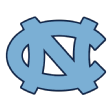 4. North Carolina. Losing guard Landon Turner hurts, but UNC still brings back four other starters from a 2015 that saw the Tar Heels outrush every ACC team not named Georgia Tech, which runs a triple-option. Former tackle John Ferranto could replace Turner at right guard.
4. North Carolina. Losing guard Landon Turner hurts, but UNC still brings back four other starters from a 2015 that saw the Tar Heels outrush every ACC team not named Georgia Tech, which runs a triple-option. Former tackle John Ferranto could replace Turner at right guard.
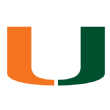 5. Miami. With every starter back for another year — along with multiple reserves — expectations should be high for the Hurricanes’ blockers in Year 1 under position coach Stacy Searels. Despite poor rushing numbers in 2015, it is telling that the Canes kept pocket passer Brad Kaaya upright; Miami was fourth in the ACC in sack percentage.
5. Miami. With every starter back for another year — along with multiple reserves — expectations should be high for the Hurricanes’ blockers in Year 1 under position coach Stacy Searels. Despite poor rushing numbers in 2015, it is telling that the Canes kept pocket passer Brad Kaaya upright; Miami was fourth in the ACC in sack percentage.
 6. Virginia Tech. Four starters are back from a unit that has had its struggles in recent years. The key will be how the unit adjusts to new head coach Justin Fuente’s faster offense, and to playing for new position coach Vance Vice.
6. Virginia Tech. Four starters are back from a unit that has had its struggles in recent years. The key will be how the unit adjusts to new head coach Justin Fuente’s faster offense, and to playing for new position coach Vance Vice.
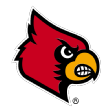 7. Louisville. As with the Hokies, four of five starters are back from last season for the Cardinals. But whether that is a good thing remains to be seen, as the young unit struggled throughout last season. Bobby Petrino was at least happy with the group’s progress this spring, which is big if the offense hopes to truly break out in 2016.
7. Louisville. As with the Hokies, four of five starters are back from last season for the Cardinals. But whether that is a good thing remains to be seen, as the young unit struggled throughout last season. Bobby Petrino was at least happy with the group’s progress this spring, which is big if the offense hopes to truly break out in 2016.
 8. Duke. The Blue Devils have to replace left guard Lucas Patrick and center Matt Skura, who were instrumental to a unit that kept the sacks down and the rushing numbers up in 2015. And returning right guard Tanner Stone’s status is in question after recent back surgery. The backups have been decimated by injury, too.
8. Duke. The Blue Devils have to replace left guard Lucas Patrick and center Matt Skura, who were instrumental to a unit that kept the sacks down and the rushing numbers up in 2015. And returning right guard Tanner Stone’s status is in question after recent back surgery. The backups have been decimated by injury, too.
 9. Georgia Tech. Paul Johnson has cracked that his O-line couldn’t be any worse than it was last year, but having to replace three regulars up front has been no easy task. Injuries halted progress this spring, as center Freddie Burden (hand) didn’t play and several key contributors could be done for good. The offense as a whole struggled in the spring game.
9. Georgia Tech. Paul Johnson has cracked that his O-line couldn’t be any worse than it was last year, but having to replace three regulars up front has been no easy task. Injuries halted progress this spring, as center Freddie Burden (hand) didn’t play and several key contributors could be done for good. The offense as a whole struggled in the spring game.
 10. NC State. The loss of Joe Thuney and two others starters obviously hurt. What’s more, those two returning starters are right guard Tony Adams, who was limited this spring with a knee injury; and right tackle Will Richardson, who was suspended from school this spring because of a November DWI charge. New position coach Dwayne Ledford has his work cut out for him.
10. NC State. The loss of Joe Thuney and two others starters obviously hurt. What’s more, those two returning starters are right guard Tony Adams, who was limited this spring with a knee injury; and right tackle Will Richardson, who was suspended from school this spring because of a November DWI charge. New position coach Dwayne Ledford has his work cut out for him.
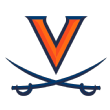 11. Virginia. The Cavaliers struggled to open up running lanes last year but protected Matt Johns fairly well, and with three starters back the task now —like that of their Virginia Tech comrades — is adjusting to a faster pace under a new regime. O-line coach Garett Tujague is hoping the line can call plays with just one or two words
11. Virginia. The Cavaliers struggled to open up running lanes last year but protected Matt Johns fairly well, and with three starters back the task now —like that of their Virginia Tech comrades — is adjusting to a faster pace under a new regime. O-line coach Garett Tujague is hoping the line can call plays with just one or two words
 12. Syracuse. Two-year starting tackle Omari Palmer is now at right guard, while his previous backup, Jamar McGloster, is now the top right tackle. Jason Emerich returns at center. The main question: Can the group as a whole trim down and get in the kind of shape necessary to help Dino Babers’ offense take off?
12. Syracuse. Two-year starting tackle Omari Palmer is now at right guard, while his previous backup, Jamar McGloster, is now the top right tackle. Jason Emerich returns at center. The main question: Can the group as a whole trim down and get in the kind of shape necessary to help Dino Babers’ offense take off?
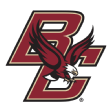 13. Boston College. The line has to better this year, right? The Eagles’ blockers — four of whom were new starters last season — fared about as well as the rest of their decimated offense did in 2015. Two starters graduated and several reserves left, although the addition of Eastern Illinois graduate transfer Jimmy Lowery and the growth of some underclassmen under Steve Addazio should offer at least some promise.
13. Boston College. The line has to better this year, right? The Eagles’ blockers — four of whom were new starters last season — fared about as well as the rest of their decimated offense did in 2015. Two starters graduated and several reserves left, although the addition of Eastern Illinois graduate transfer Jimmy Lowery and the growth of some underclassmen under Steve Addazio should offer at least some promise.
 14. Wake Forest. The progress this unit made from Year 1 to Year 2 under the Dave Clawson regime should make Demon Deacons fans optimistic about the possibilities of Year 3. In short, they looked like a college O-line. With four starters back, and finally with some conditioned depth, it is easy to imagine the Deacs moving up the ladder here by year’s end, despite the previous two years’ numbers.
14. Wake Forest. The progress this unit made from Year 1 to Year 2 under the Dave Clawson regime should make Demon Deacons fans optimistic about the possibilities of Year 3. In short, they looked like a college O-line. With four starters back, and finally with some conditioned depth, it is easy to imagine the Deacs moving up the ladder here by year’s end, despite the previous two years’ numbers.

















